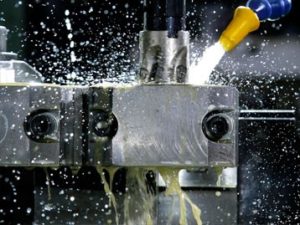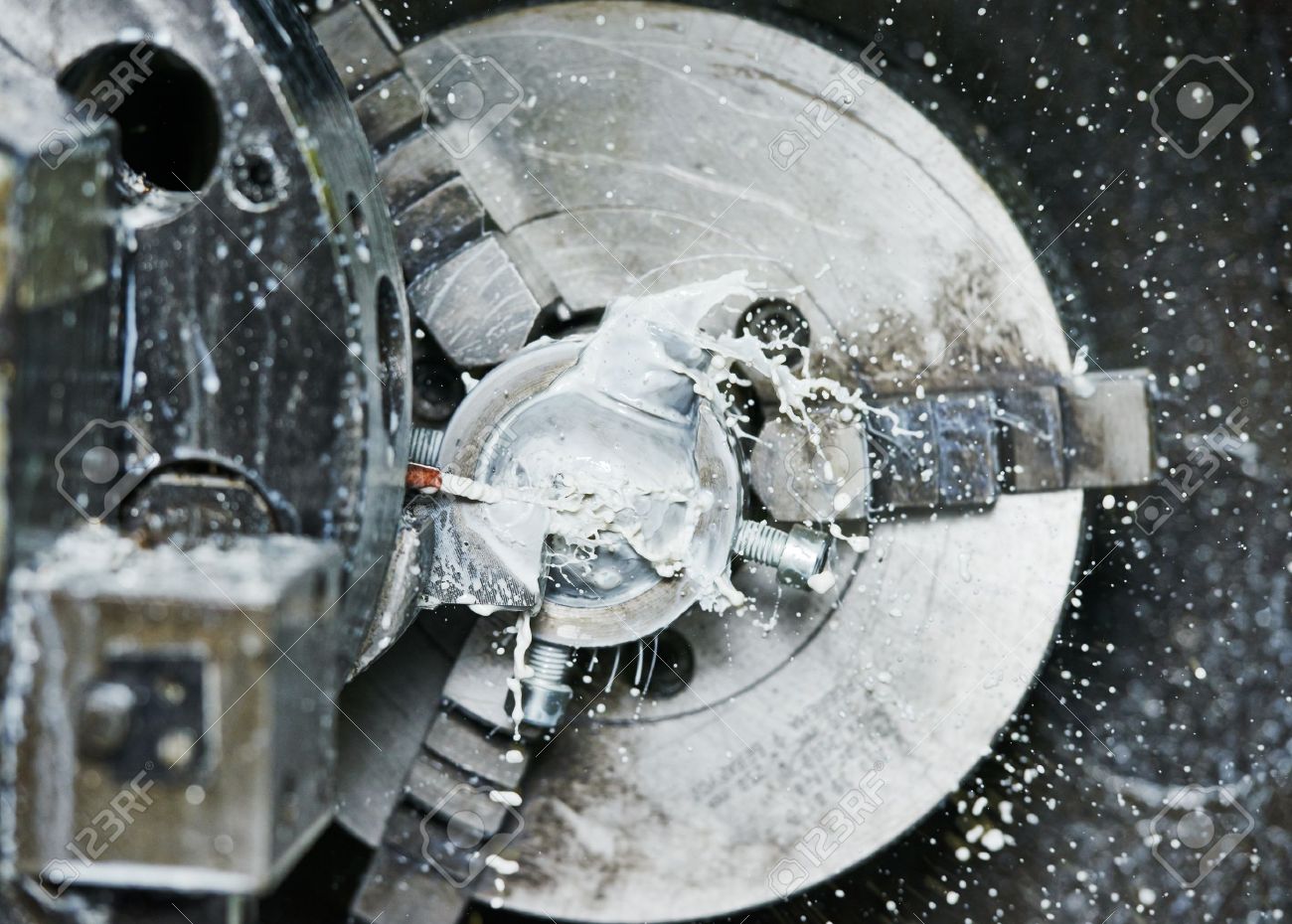Metalworking is a collective name for a variety of machining processes whereby metal is brought to a specified geometry by removing excess material by means of various kinds of cutting and grinding operations. The net result of metalworking is two products: the finished workpiece and waste. Depending on the machining operation, the waste can be metal swarf (small gritty chips or filings), shavings, turnings or stringy tendrils.

Enormous amounts of friction and heat are generated at the cutting interface between the cutting tool and workpiece during the metal removing process. Metalworking fluid (MWF) is used to reduce friction and heat during the machining operation. MFW must also improve workpiece quality, reduce cutting tip wear, remove swarf, improve process productivity and protect the workpiece and machine tools against rust and corrosion. The MWF is generally applied by a spray across the face of the tool and workpiece as shown in the milling operation on the right.
Most MWFs presently in use fall into one of the following two categories:
Neat Metalworking Fluids – also referred to as cutting oils. These are non-emulsifiable fluids and are used in machining operations in undiluted form. They are composed of base oils and normally contain polar compounds such as esters and fatty acids (corrosion inhibitors and lubricity agents), as well as extreme pressure (EP) additives. Typical EP additives are Chlorine, Phosphorus and Sulphur. Neat oils provide the best lubrication and are most effective at reducing friction.
Soluble Metal Working Fluids – often called emulsifiable cutting fluids because they form an emulsion when mixed with water. The concentrate consists of base oil (mineral, synthetic or semisynthetic) and emulsifiers to produce stable emulsions when mixed with water. In addition typical soluble MWFs formulations include a selection of the following additives: EP agents, rust and corrosion inhibitors, coupling agents, biocides, antifoam agents, scents and dyes.
Synthetic based soluble MWFs provide the best performance as far as cooling, tool life and resistance to bacterial growth (increased sump life) is concerned. In some metalworking operations workpiece visibility is important. Synthetic MWFs form clear transparent solutions, whilst mineral and semisynthetic formulations form milky (see photo above) to semi-transparent emulsions.
Soluble MWFs are always used in diluted form, generally in 3% to 10% concentrations. Soluble grinding fluids may be used in concentrations as low as 1%. Emulsifiable MWFs provide the best cooling and heat transfer performance. Consequently water soluble coolants have become vital in achieving the higher feeds and speeds required to ensure maximum production efficiency. They are widely used in industry and are the least expensive among all cutting fluids.
There are various issues to consider when selecting a MFW. These are the metals to be machined, the machining operations, machine types, tooling requirements, downstream plant processes and finally chemical and environmental restrictions. Discussions in this newsletter will be restricted to the two most significant aspects:
Metals
Some metals are more difficult to machine than others. Stainless steel, complex alloys and very hard metals demand a very high level of performance from the cutting oil. Other metals, like brass and aluminium, are easy to machine with general purpose oils. Where tough, difficult to machine metals are involved, highly additized cutting oils with excellent EP properties and anti-weld capability are required. Quite often these oils contain active sulphur and chlorine to protect the cutting tool and to ensure good workpiece finish. For brass, aluminium, many carbon steels and low-alloy steels, cutting oils with lubricity additives, and mild EP/anti-weld performance are sufficient. These oils are generally formulated with inactive sulfurized fat and/or chlorinated paraffin. Cutting oils formulated with active sulphur should not be used for brass and aluminium, as they will stain or tarnish the finished parts. Oils formulated for brass and aluminium are often called “non-staining” oils.
Machining Operations
Following is a list of the most common machining operations in order of increasing severity:
- Sawing

- Turning
- Milling
- Drilling
- Grinding
- Reaming
- Honing
- Gear Hobbing and Shaping
- Tapping and Threading
- Broaching
Easy machining operations (turning, milling, drilling, etc.) can be performed at higher speeds and require high levels of cooling with only modest EP capability. Soluble MWFs are generally used for milder operations. When a neat cutting oil is preferred for easy machining operations for whatever reason, the operations can be performed with lower viscosity, lightly additized fluids.
Difficult machining operations must be run at lower speeds and require a great deal of anti-weld protection. Oils designed specifically for the most severe operations, like thread cutting or broaching, are generally higher in viscosity and loaded with EP additives, like active sulphur and chlorine.
Although this brief discussion of metalworking fluid selection criteria demonstrates the complexity to select the proper cutting fluid, there is light at the end of the tunnel. MWF product data sheets (PDS) will normally indicate for what metals and machining operations the particular product is suitable. For soluble oils the PDS will also give an indication of what mixing ratios should be used for the various machining operations. If you are still in doubt our experts are at your disposal and ready to provide you with advice and answer any questions you may have. For more information simply mail us at info@bcl.co.za


